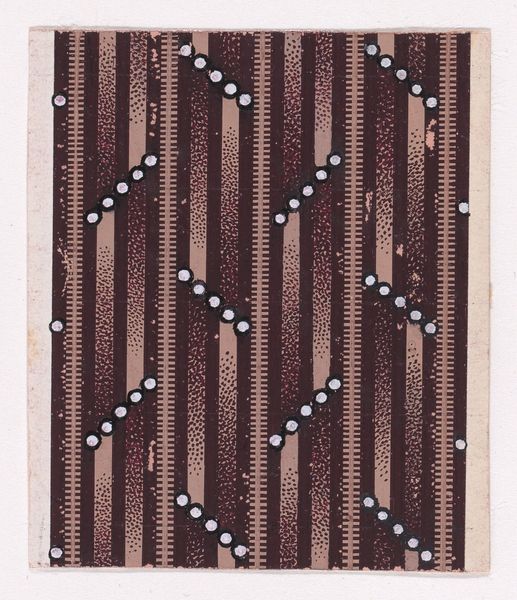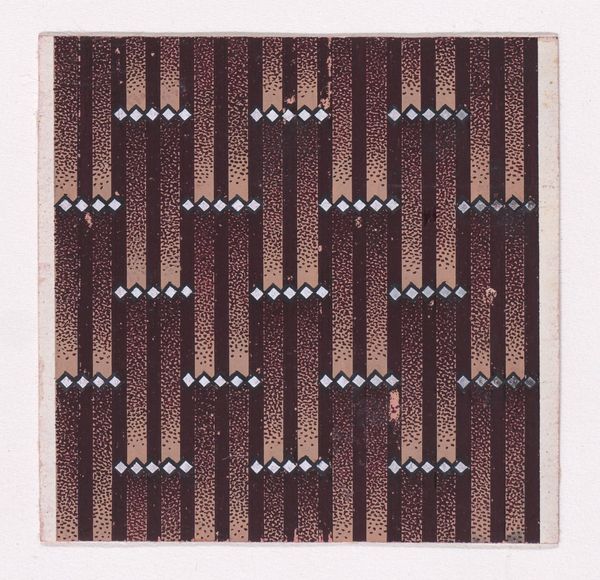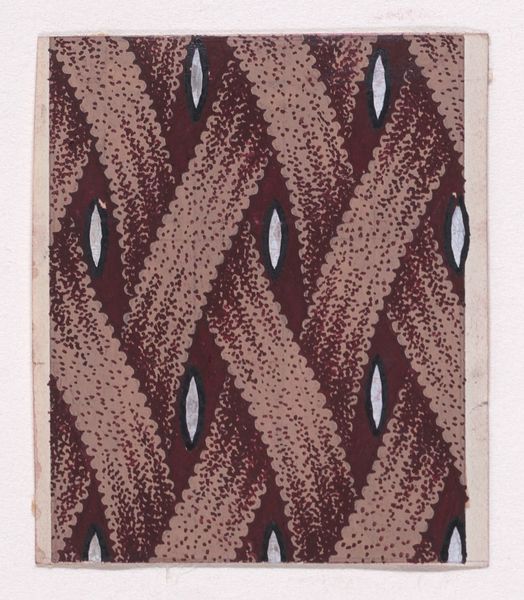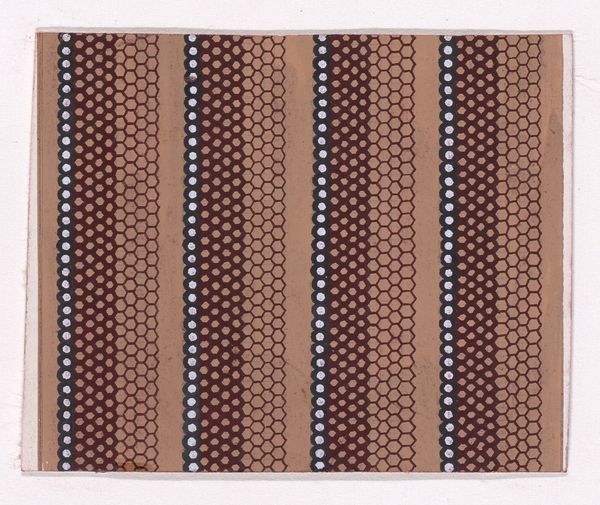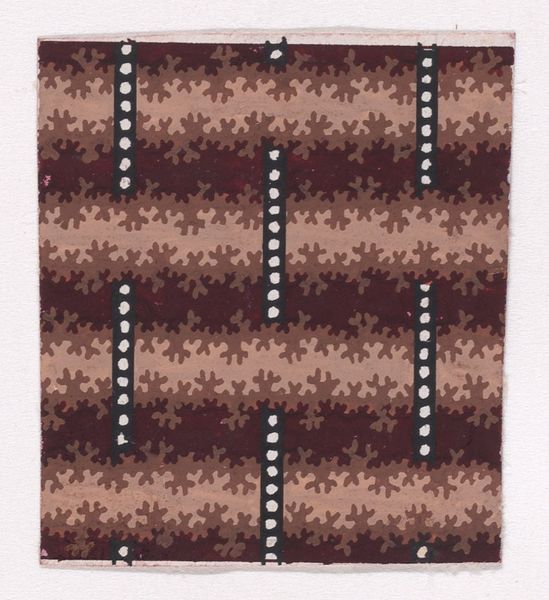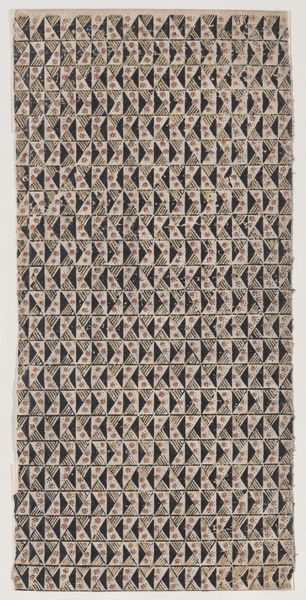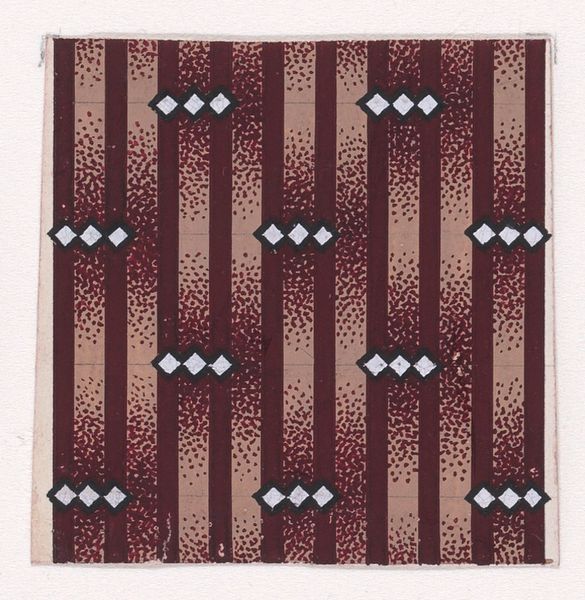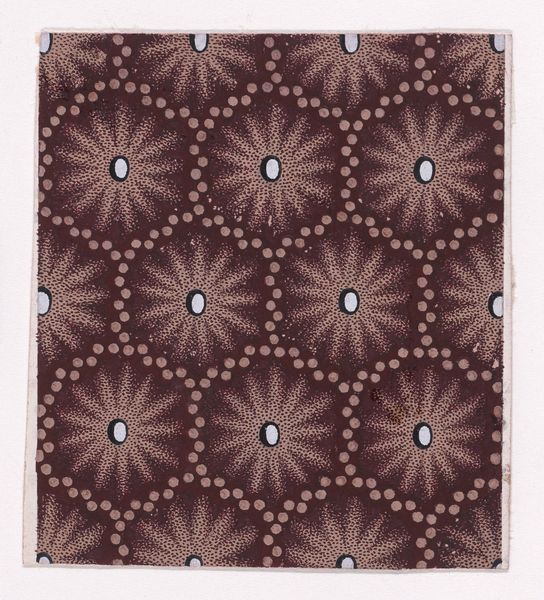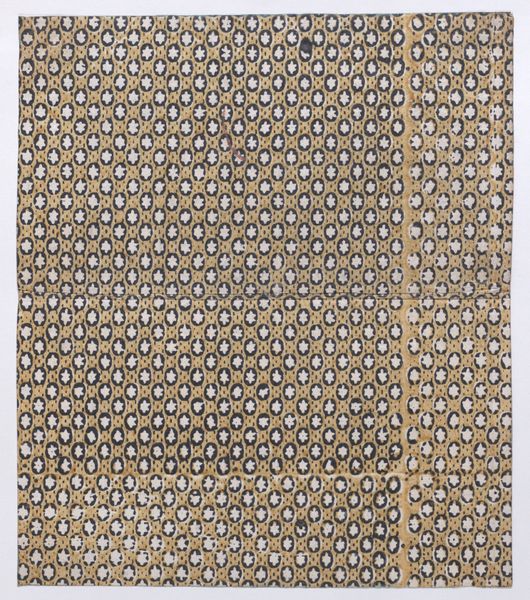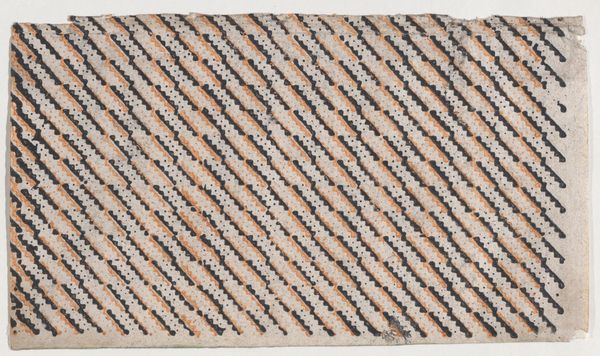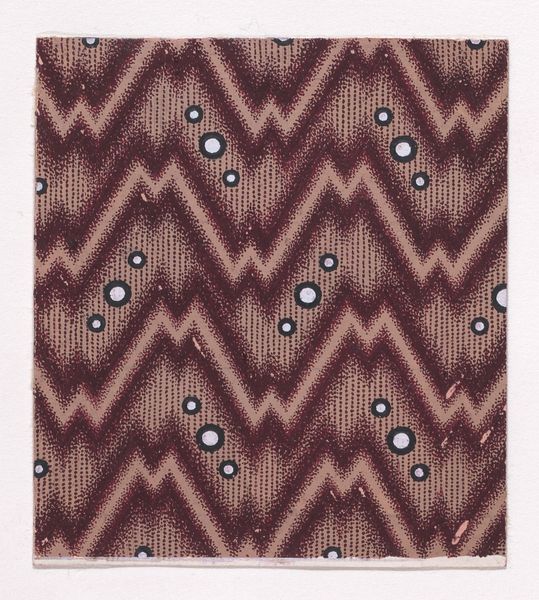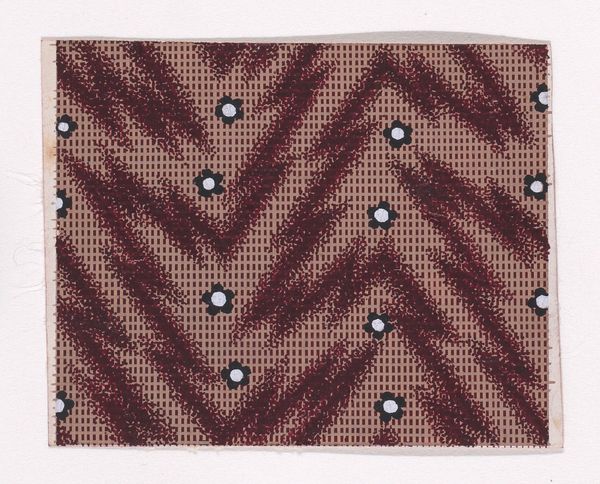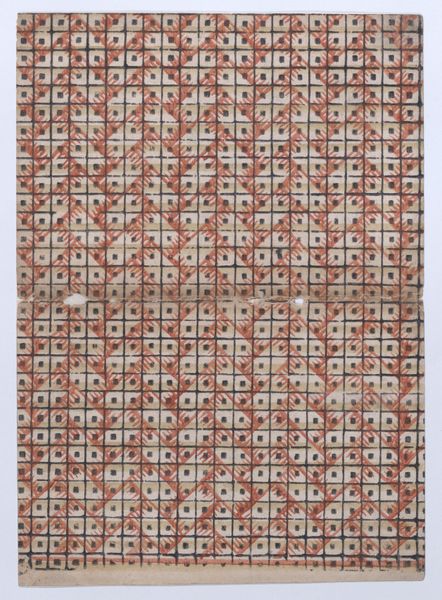
Textile Design with Alternating Diagonal Strings of Squares over a Striped Background 1840
0:00
0:00
print, textile
# print
#
textile
#
form
#
geometric pattern
#
abstract pattern
#
geometric
#
geometric-abstraction
#
repetition of pattern
#
line
#
textile design
Dimensions: Sheet: 2 3/8 × 1 15/16 in. (6.1 × 4.9 cm)
Copyright: Public Domain
Editor: Here we have an anonymous textile design from 1840, "Textile Design with Alternating Diagonal Strings of Squares over a Striped Background." It's a drawing and print. It's captivating in its simplicity. I am curious – how do you interpret this composition? Curator: The interest lies, undoubtedly, in the interplay of form and the almost mathematical rigor of its construction. Notice how the vertical stripes create a foundational rhythm, a kind of visual beat, against which the diagonal squares perform. It evokes, for me, an analytical, precise character. Editor: I see what you mean! It’s very precise. The stripes *do* feel like they stabilize the pattern. Curator: Precisely. The strategic arrangement of the squares leads the eye in a distinct direction; the intentional repetition further emphasizes this constructed movement. What is your analysis of the relationship between line and plane in this piece? Editor: I see the verticality and horizontality—the contrast feels vital, structural even. Curator: Indeed. It appears, too, the pattern leverages what could be called, after Jakobson, the ‘poetic function,’ where the focus is less on external reference and more on the artwork’s internal organization itself. This arrangement becomes its own meaning. Editor: I can understand that. So the form is, in itself, the content? Curator: To a large degree, yes. The abstraction allows the formal qualities to come to the forefront. And further, consider its placement within the Pattern and Decoration movement; in these terms, the design subverts hierarchy of design. Editor: I hadn't thought about that, but it really highlights how meaning can be created simply through visual arrangement and form! Curator: Precisely, and further underscores the radical potential of art as an exploration of internal logics rather than external representations.
Comments
No comments
Be the first to comment and join the conversation on the ultimate creative platform.
